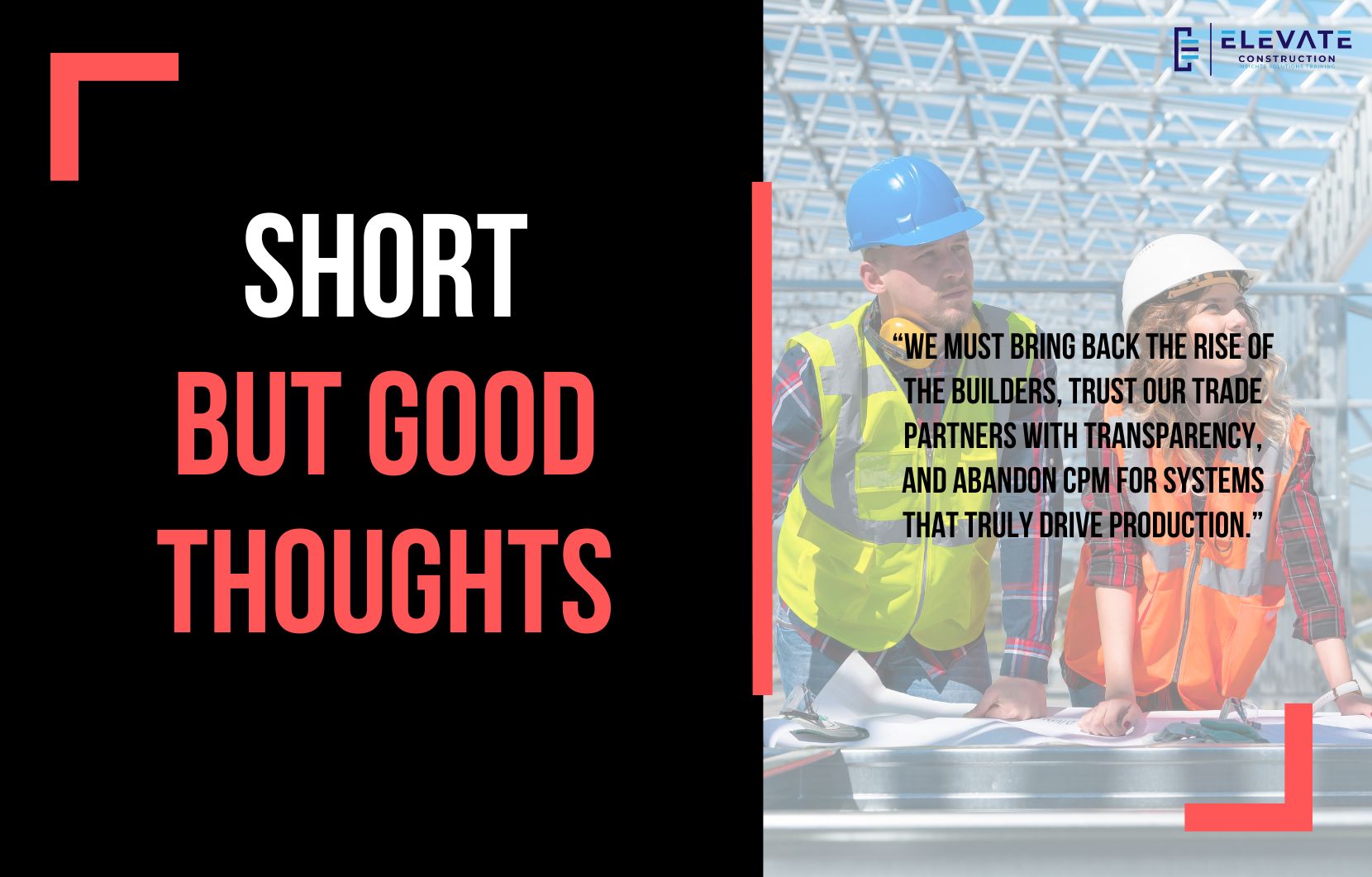Three Critical Shifts We Need in Construction
I am writing this blog from California while taking a little PTO, and it feels refreshing. Out here, mornings are cool and quiet, unlike Phoenix where the heat lingers through the night. That change of pace got me thinking about construction in the same way. Sometimes, we get stuck in old patterns, but a shift in perspective helps us see what really matters. Today, I want to share three short but important thoughts that could change the way we build.
1. The Rise of the Builders
For years now, I have noticed a troubling trend. Many companies are leaning heavily toward project management, placing PMs above superintendents rather than treating them as equals. This imbalance has created a culture where administration outweighs production.
We have lived through two eras of construction. The first was Taylorism, where efficiency was forced on workers through micromanagement. The second has been the rise of administration, fueled by certifications, paperwork, and endless reporting. What has suffered in the process is the role of the true builder, the field engineer, the foreman, the superintendent.
It is time for a third era. An era focused on profitability, productivity, and production systems. That means developing skilled builders who know production theory, lean principles, and collaborative practices. Project managers still have a role, but it must be refocused on supporting real work, not drowning teams in useless reports.
That is why the book series The Art of the Builder is so important. By building a library of resources for foremen, superintendents, and field leaders, we can restore balance. The future belongs to the builders who lead with clarity and production based thinking.
2. Stop Hiding Schedules from Trades
Another issue that comes up far too often is hiding project schedules from trade partners. I have heard multiple times that leaders withhold the full schedule because they do not want trades to see buffers, adjust dates, or challenge milestones. The idea is to keep trades in the dark so they will work harder under a false sense of urgency.
This is destructive thinking. First, it is dishonest. Second, it erodes trust with the very people doing the work. Third, it undermines the Last Planner System, which depends on shared information and collective planning. Collaboration cannot happen in secrecy.
Trade partners are not trying to game the system. They want to do quality work, finish on time, and move on to the next project. When leaders withhold information, it only creates fear, mistrust, and delays. The truth is, hiding the schedule is not a strategy, it is incompetence or fear.
When schedules are open, transparent, and aligned with production principles, trade partners can buy in, coordinate effectively, and take ownership of outcomes. Trust drives results. Hiding schedules destroys them.
3. Escaping the Hell of CPM
The last thought I want to share is about CPM scheduling. I have talked about this before, but it is worth repeating because of how destructive it is in practice.
Two of our integrators were recently on a massive project where the senior scheduler demanded that every weekly work plan be entered into CPM, networked together, and exported. The process was so overwhelming that it drained time, energy, and morale. Instead of leading the project, the team was drowning in administration.
This is the nightmare of CPM. It consumes hours of work but provides no clear path to recover a project. It is like standing by a river while your child is drowning and choosing to watch through binoculars instead of jumping in to save them. CPM gives you data, but it does not save the project.
Takt planning, on the other hand, provides actionable systems that help teams align, adapt, and execute. It turns planning into a proactive tool instead of a bureaucratic burden. If construction is going to move forward, we have to leave behind the nightmare of CPM and embrace production systems that actually work.
Final Thoughts
These three ideas, the rise of the builders, transparency with trade partners, and the shift away from CPM, are not just random thoughts. They are urgent calls to action. We need to equip field leaders with knowledge, trust our trade partners with full information, and adopt systems that actually drive production.
If we want construction to thrive, it starts with building differently. It starts with elevating the builders.
Key Takeaway
We must bring back the rise of the builders, trust our trade partners with transparency, and abandon CPM for systems that truly drive production.
If you want to learn more we have:
-Takt Virtual Training: (Click here)
-Check out our YouTube channel for more info: (Click here)
-Listen to the Elevate Construction podcast: (Click here)
-Check out our training programs and certifications: (Click here)
-The Takt Book: (Click here)
Discover Jason’s Expertise:
Meet Jason Schroeder, the driving force behind Elevate Construction IST. As the company’s owner and principal consultant, he’s dedicated to taking construction to new heights. With a wealth of industry experience, he’s crafted the Field Engineer Boot Camp and Superintendent Boot Camp – intensive training programs engineered to cultivate top-tier leaders capable of steering their teams towards success. Jason’s vision? To expand his training initiatives across the nation, empowering construction firms to soar to unprecedented levels of excellence.
On we go

